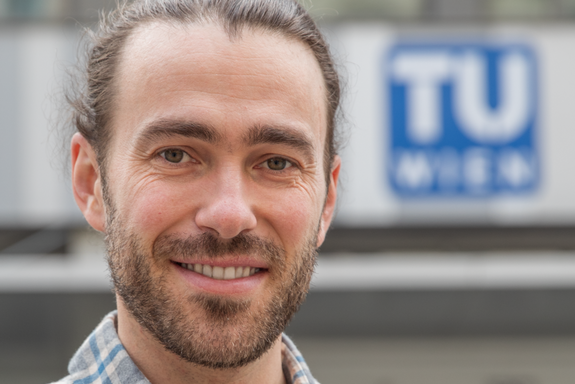Most electronic semiconductor components are made of silicon – a relatively inexpensive material. However, silicon can only be used in the range of relatively low electrical voltages. Wherever high voltages occur, it is easily destroyed. Other materials - such as silicon carbide - have significant advantages at higher voltages: they are more stable and they result in more energy-efficient electronic components. But the production of silicon carbide requires an extremely large amount of energy and is therefore also very expensive.
At TU Wien, a way to solve this problem has been demonstrated: Using a special etching technique, it is possible to produce up to 20 layers from one single silicon carbide disc, a so-called wafer. All of these layers can then be used to manufacture electronic components. Now a Christian Doppler laboratory has been opened to work out this technology in detail. The lab is supported by the industrial partners Umicore and EVG, as well as by the Federal Ministry of Labour and Economics.
Huge energy demand
Computer chips only work with small voltages and tiny currents. However, electronic components often have to control high currents - for example in charging stations for electric cars or in converters that adapt the current of photovoltaic or wind power plants to the grid frequency. "At voltages higher than 650 V, silicon carbide is actually the optimal material," explains Georg Pfusterschmied, the head of the new CD lab. "However, its production today is extremely expensive and anything but sustainable. The production of nine silicon carbide wafers with a diameter of six inches (about 15 cm) today requires about 4500 kilowatt hours of electricity, which is roughly equivalent to the electricity consumption of an average household in Austria in an entire year."
In view of this, it is particularly regrettable that a large part of the silicon carbide is actually not used at all: "You have to produce the silicon carbide wafers in a certain minimum thickness because otherwise they simply cannot be processed technically," says Georg Pfusterschmied. "But the electronic components that end up being made are usually much thinner. With many electronic components, a large part of the material has so far been removed during production and remains unused."
At TU Wien, however, a way has been found to change that: The silicon carbide is transformed into a porous structure by a special etching process, similar to a sponge, with tiny holes on a size scale of nanometres. If you do this in a precisely controlled way, you can then peel off the porous layer. If you then heat this porous SiC film, the atoms reorganise and reassemble into a complete single crystal without holes - but now with a much smaller thickness than before.
With the remaining silicon carbide material of the wafer, the same procedure can now be repeated - thus, according to the current state of the art, up to 20 thin foils can be detached from a single silicon carbide wafer, all of which can then be used for the production of components.
About Christian Doppler Laboratories
The "CD Laboratory for Sustainable Silicon Carbide Technology" was officially opened on 2 March 2023. In Christian Doppler Laboratories, application-oriented basic research is carried out at a high level. Outstanding scientists cooperate with innovative companies. The Christian Doppler Research Association is internationally regarded as a best-practice example for the promotion of this cooperation.
Christian Doppler Laboratories are jointly financed by the public sector and the participating companies. The most important public funding body is the Federal Ministry of Labour and Economic Affairs (BMAW).
Contact
Dr. Georg Pfusterschmied
Institut für Sensor- und Aktuatortechnik
TU Wien
+43 1 58801 36649



